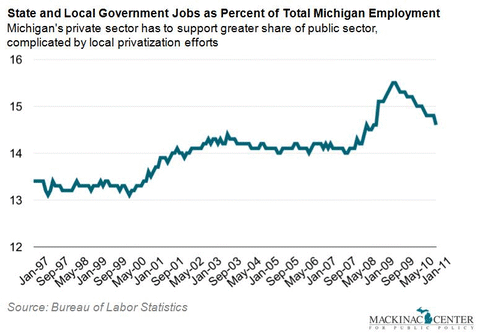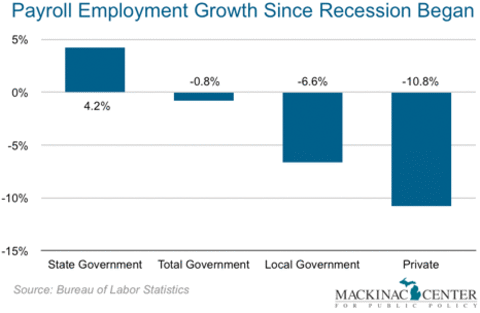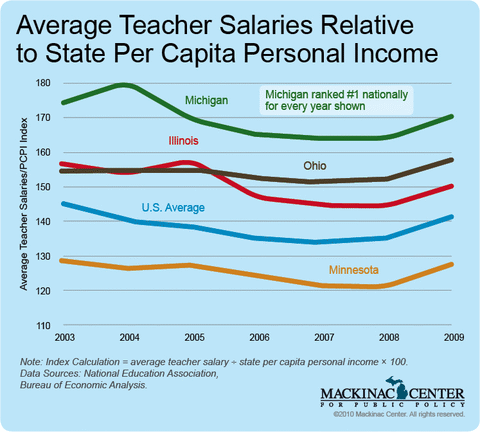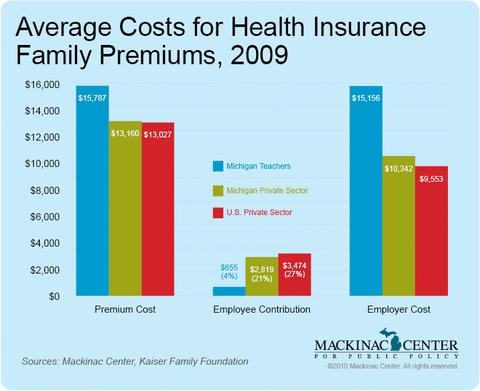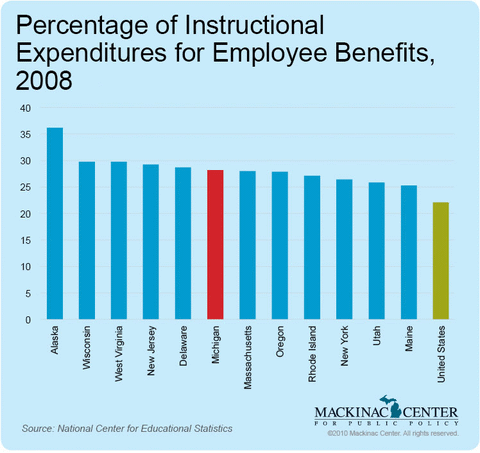Helpful Facts About Michigan's Public Sector
Employment Figures
Michigan Civil Service: 50,799
Local Public Educational: 175,973
Total State and Local: 411,659
University and Community College: 60,544
Imputed Local Government: 124,343
Public Sector vs. Private Sector
- Bringing public-employee benefits in line with private-sector averages would save $5.7 billion in Michigan.
- Public-sector bargaining privileges are not inalienable rights.
- Public-sector wages and benefits have increased while the private-sector's have fallen.
- Insurance benefits per public-sector employee are $7,149 more per year than in the private sector.
- Retirement benefits per public-sector employee are $11,725 more per year than in the private sector.
- Since the early 2000s, state and local government jobs as a percentage of total Michigan employment increased from around 13 percent to a high of 15.5 percent in 2009.
- Since the beginning of the recession, the number of government jobs fell by 0.8 percent. Private-sector jobs fell 10.8 percent.
- People that work for the state directly receive wages and benefits that cost $94,686 on average.
Public School Teachers
Salary
- Nationally, Michigan has the 8th highest average public school teacher salary.
- From 2003 to 2009, Michigan teaching salaries were the highest in the nation when controlling for state per capita personal income.
- The average teacher salary in Michigan has risen for 13 consecutive years, to $63,445 for unionized teachers in conventional districts (excluding charters). The average salary for private school teachers nationally is $39,700; when including benefits, the disparity is even greater.
- The average annual across-the-board salary increase from 2003 to 2010 was 1.8 percent.
Health Insurance
- In 2009, teachers in 300 Michigan districts paid nothing to the costs of their own health insurance premiums.
- For Michigan public school teachers, their average contribution to the health insurance premium for family plan is 4 percent. The Michigan private-sector average is 22 percent, and the average for federal employees in Michigan is about 25 percent.
- Michigan public school districts spent an average of 47 percent more for a family plan health insurance premium for teachers than the private-sector average.
- Michigan spends $1,300 per pupil on school employee health insurance, up 56 percent since 2000, after adjusting for inflation.
- 80 percent of Michigan school districts use MESSA for at least one employee group. MESSA’s average premium went up 13 percent last year.
- Most teachers get subsidized post-employment health insurance for life.
Other Benefits
- From 2000 to 2010, benefits per full-time classroom teacher rose by 37 percent, even after adjusting for inflation (excluding charter school teachers)
- Michigan spends $1,500 per pupil on school employee pensions, up 25 percent since 2000, after adjusting for inflation.
- Michigan ranks 6th in the nation for percentage of instructional spending on employee benefits (28 percent).
- Michigan public school employees get a defined-benefit pension that they can start collecting at age 55 after 10 years on the job or after 30 years at any age.
- Most teachers are contractually obligated to work 185 days per year. The average private-sector work year is about 245 days.
- Teachers are paid based only on their own educational attainment and years on the job — not on their performance in the classroom.
Michigan Capitol Confidential is the news source produced by the Mackinac Center for Public Policy. Michigan Capitol Confidential reports with a free-market news perspective.


